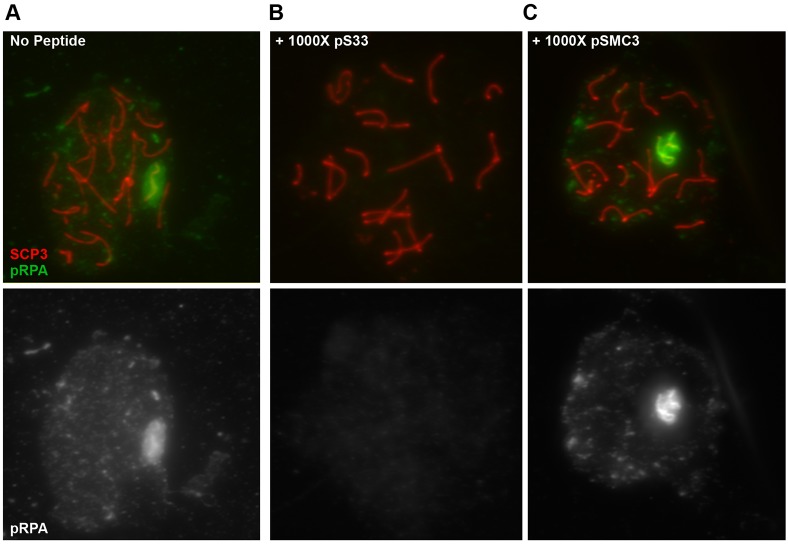Fig. 2.
Specificity of pRPA antibody. WT spermatocytes were incubated with a molar excess of specific or non-specific phosphopeptides, along with antibodies against pRPA. The pRPA signal associated with the XY body (A) was completely abolished in the presence of a peptide specific for this antibody (pS33) (B). By contrast, even a 1000-fold molar excess of a peptide corresponding to SMC3, a known component of the XY body, had no effect on the association of the pRPA antibody with the sex chromosomes (C).

